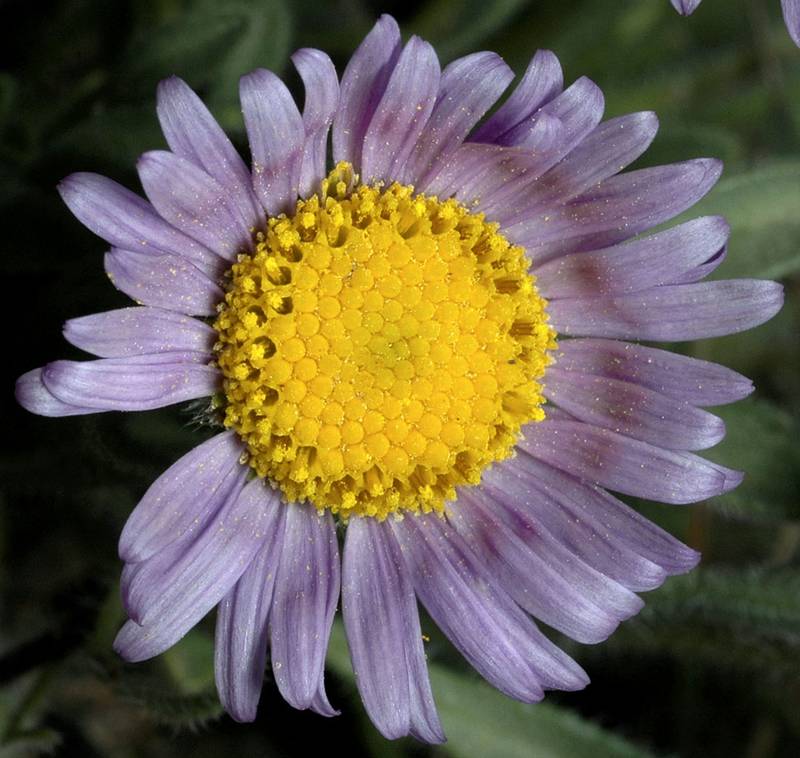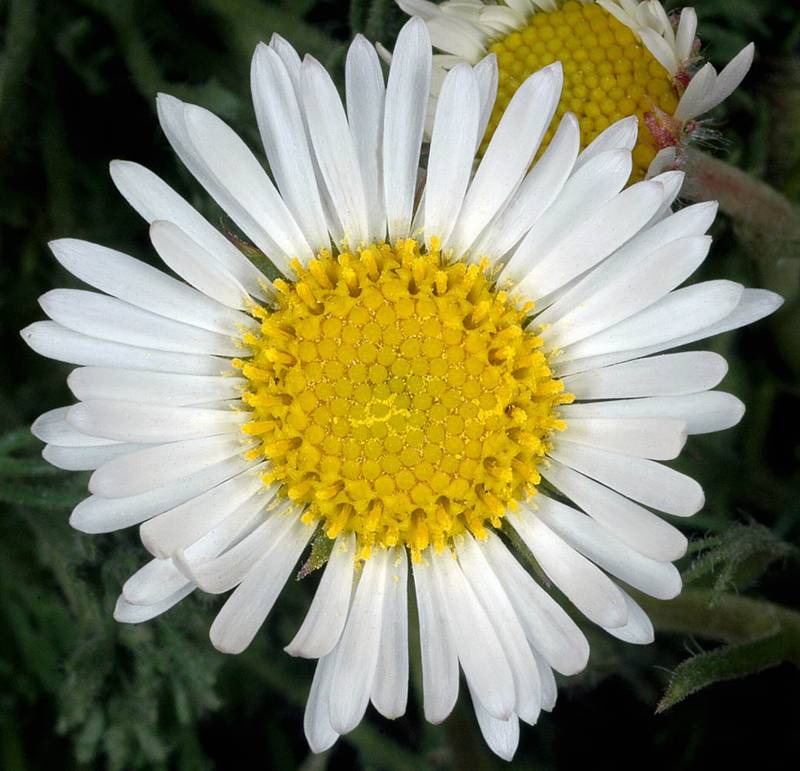Erigeron poliospermus
Erigeron compositus
hairy-seeded daisy, cushion fleabane
cutleaf daisy, dwarf mountain fleabane, fernleaf fleabane, trifid mountain fleabane
Basal leaves linear-oblanceolate to spatulate, up to 8 cm. long and 12 mm. wide, the cauline leaves reduced.
Basal leaves trifid to ternately dissected;
cauline leaves few, linear and entire.
Heads solitary, hemispheric, the disk 9-20 mm. wide;
involucre 5-9 mm. high;
rays 15-45, pale pink or purple to deep violet, 4-15 mm. long and 1.3-3.6 mm. wide;
pappus of 20-30 capillary bristles.
Heads solitary on long, nearly leafless stems, glandular and hairy; pistillate flowers 20-60, with usually white but occasionally pink or blue rays up to 12 mm. long and 2 mm. wide, or wanting;
disk flowers yellow;
pappus of 12-20 capillary bristles.
Achenes densely covered with long, silky hairs.
Erigeron poliospermus
Erigeron compositus
- Local floras:
BC,
OR,
WA
- Local Web sites:
Flora NW,
PNW Herbaria
WildflowerSearch
iNaturalist (observations)
USDA Plants Database
- LBJ Wildflower Center
- SEINet
- Plants of the World Online
- Encyclopedia of Life
- Wikipedia
- Google Image Search
- Local floras:
BC,
CA,
OR,
WA
- Local Web sites:
CalFlora,
CalPhotos,
Flora NW,
PNW Herbaria,
Turner Photog.
WildflowerSearch
iNaturalist (observations)
USDA Plants Database
- LBJ Wildflower Center
- SEINet
- Plants of the World Online
- Encyclopedia of Life
- Wikipedia
- Google Image Search



